Cleaning rubber gym mats is straightforward when you use the right products and techniques. You’ll need to sweep or vacuum loose debris first, then mop with a mild soap solution, and finally allow proper drying. This simple approach prevents damage while ensuring your mats remain hygienic and maintain their appearance.
As a production manager at a rubber gym flooring factory for over 15 years, I’ve seen countless examples of perfectly good mats ruined by improper cleaning methods. The good news? Proper cleaning is actually quite simple when you know what to do (and what to avoid). Rubber mats are incredibly durable, but using harsh chemicals or the wrong tools can significantly reduce their lifespan and performance. I’ll walk you through exactly how to clean your rubber gym mats effectively, based on the same guidance we provide to our commercial clients who maintain thousands of square feet of rubber flooring daily.
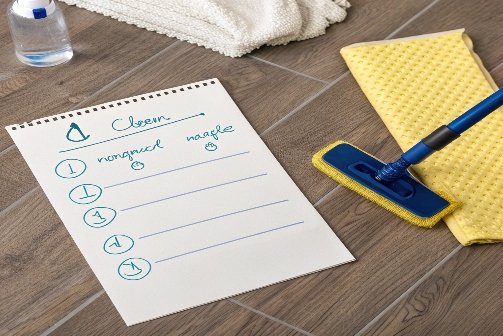
Getting your rubber gym mats properly clean doesn’t require expensive specialty products or complicated procedures. In fact, the simpler your approach, the better your results will typically be. Let’s dive into specific cleaning methods that work for different situations you might encounter.
What Is The Best Way To Clean A Rubber Gym Floor?
The best way to clean a rubber gym floor is to first remove loose debris with a broom or vacuum, then mop with a pH-neutral cleaner mixed with warm water. For commercial settings, using an auto-scrubber with non-abrasive pads provides excellent results. This method preserves the rubber’s integrity while ensuring proper sanitation.
Daily Cleaning Routine
When I visit our clients’ facilities, I always emphasize the importance of establishing a regular cleaning schedule. For high-traffic commercial gyms, daily cleaning is essential, while home gyms might require attention 1-3 times weekly depending on usage.
For Daily Maintenance:
- Remove loose debris with a soft-bristle broom or vacuum with a soft brush attachment
- Spot clean any spills or stains immediately
- Use a slightly damp microfiber mop for quick wipe-downs
Deep Cleaning Process
For deep cleaning sessions (recommended weekly for commercial settings, monthly for home gyms), follow this comprehensive approach:
- Thoroughly vacuum or sweep all loose debris
- Prepare a cleaning solution using:
- 1 gallon of warm water
- 1/4 cup of mild dish soap (free of bleach, oils, or moisturizers)
- OR 1/2 cup of white vinegar (for disinfecting properties)
- Apply the solution with a nylon or microfiber mop, being careful not to oversaturate
- For stubborn stains, gently scrub with a soft-bristled brush
- Rinse with clean water using a separate mop
- Remove excess moisture with dry towels or a wet vacuum
- Allow to air dry completely with good ventilation
Commercial Equipment Options
For larger facilities, I often recommend:
- Auto-scrubbers with non-abrasive pads (set to low pressure)
- Microfiber floor cleaning systems
- Commercial wet vacuums for moisture removal

The best way to keep your rubber gym floor in optimal condition is through consistent cleaning with the right tools and solutions. Remember that prevention is always easier than remediation when it comes to floor maintenance.
How To Make Rubber Gym Floor Mats Black Again?
To restore faded black rubber gym mats, clean thoroughly with a neutral pH cleaner, then apply a water-based rubber rejuvenator designed specifically for gym flooring. Avoid oil-based products or tire shine, as these create slippery surfaces dangerous for workouts. Regular conditioning helps maintain the deep black appearance.
Why Rubber Mats Fade
In our factory testing lab, we’ve studied exactly why rubber mats lose their rich black color over time. The primary culprits are:
- UV exposure from sunlight or artificial lighting
- Residue buildup from body oils, chalk, and cleaning products
- Mineral deposits from hard water
- Oxidation of the rubber surface
- Abrasion from foot traffic and equipment
Restoration Process
Through years of product development, I’ve found this step-by-step process most effective for restoring black rubber gym mats:
Step 1: Deep Clean
First, remove all existing residue using the deep cleaning method described earlier. For particularly dull mats, add 1/2 cup of white vinegar to your cleaning solution to help break down mineral deposits.
Step 2: Apply Rubber Conditioner
Select a water-based rubber conditioner specifically formulated for gym flooring. Many commercial options are available, but at our factory, we recommend products containing:
- Natural rubber conditioners
- UV stabilizers
- Non-silicone moisture repellents
Step 3: Application Technique
- Ensure mats are completely clean and dry
- Apply a small amount of conditioner to a microfiber cloth
- Work in small sections, using circular motions
- Allow to dry for 30-60 minutes
- Buff lightly with a clean, dry microfiber cloth
- Apply a second coat if needed
Important Cautions:
- Never use automotive products like Armor All or tire shine – they create dangerous slippery surfaces
- Avoid silicone-based products that attract dust and dirt
- Test any conditioner on a small area first
- Ensure proper ventilation during application
For severely faded mats, you may need to repeat this process 2-3 times to achieve the desired blackness. Establishing a quarterly conditioning schedule will maintain the appearance moving forward.

With proper restoration and maintenance, your rubber gym mats can maintain their rich black appearance for years to come, creating a professional atmosphere in your workout space.
How Do You Clean Dirty Rubber Mats?
To clean heavily soiled rubber mats, first remove loose debris, then apply a neutral pH cleaner diluted with warm water. For stubborn stains, use a soft-bristled brush with gentle circular motions. Rinse thoroughly and dry completely to prevent moisture damage and mildew growth beneath the mats.
Tackling Different Types of Stains
In our factory testing lab, we encounter every type of stain imaginable. Here’s my guide for handling the most common tough stains:
Chalk and Powder Residue
Chalk from weightlifting and powder from various gym activities can build up and create a dull film:
- Use a dry microfiber mop first to pick up loose powder
- Mix 1 gallon warm water with 1/4 cup mild dish soap
- Mop thoroughly, changing water frequently
- Rinse with clean water
Oil and Grease Stains
From machinery or even natural body oils:
- Sprinkle baking soda or cornstarch directly on the stain
- Let sit for 30 minutes to absorb oils
- Sweep away and clean with regular solution
- For stubborn oil stains, a specialized rubber-safe degreaser may be necessary
Manchas de óxido
From metal equipment:
- Mix equal parts lemon juice and cream of tartar
- Apply paste to stain
- Let sit for 10-15 minutes
- Scrub gently with soft brush
- Rinse thoroughly
Sticky Residue
From tape, gum, or spilled drinks:
- Apply ice to harden the substance if gummy
- Gently scrape with a plastic scraper (never metal)
- Use a citrus-based cleaner approved for rubber
- Rinse and dry thoroughly
Deep Cleaning Process for Severely Soiled Mats
For mats that haven’t been properly maintained, you’ll need this intensive approach:
- Consider moving mats outside if possible
- Pre-treat with diluted neutral cleaner (1:10 ratio)
- Allow to dwell for 10 minutes
- Scrub with a floor buffer using soft pads (or by hand with soft brushes)
- Extract dirty solution with wet vacuum
- Rinse thoroughly with clean water
- Extract rinse water
- Allow to dry completely before reinstalling
For commercial facilities, I recommend this deep cleaning every 3-6 months depending on traffic levels. For home gyms, twice yearly is typically sufficient.
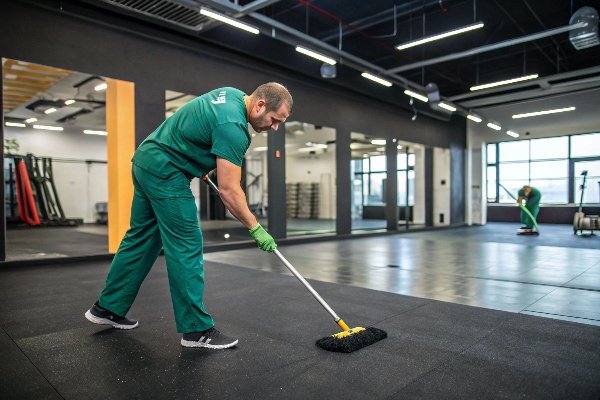
With proper attention to specific stains and occasional deep cleaning, even the dirtiest rubber mats can be restored to excellent condition, extending their useful life significantly.
How Do You Clean The Rubber On Gym Shoes?
To clean rubber soles on gym shoes, create a solution of warm water and mild dish soap, then scrub with an old toothbrush using circular motions. For stubborn marks, add baking soda to form a paste. Rinse thoroughly and air dry completely before wearing to prevent tracking residue onto your clean rubber mats.
While this topic relates more to footwear than flooring, it’s actually crucial for maintaining your rubber gym mats. Clean shoes significantly reduce the amount of dirt and debris tracked onto your mats in the first place.
Quick Cleaning Method for Rubber Soles
I recommend keeping a designated cleaning station at your gym entrance with:
- A bench for sitting
- A small basin for cleaning solution
- Several old toothbrushes
- Clean microfiber cloths
- Signs encouraging shoe cleaning before entering
The cleaning process is simple:
- Mix warm water with a few drops of dish soap
- Dip toothbrush in solution
- Scrub rubber soles in circular motions
- Pay special attention to treads and grooves
- Wipe with damp cloth to remove soap
- Allow to dry for a few minutes before walking on mats
Removing Black Scuff Marks
For those stubborn black marks on white rubber soles:
- Make a paste using:
- 1 tablespoon baking soda
- 1 teaspoon water
- Apply directly to marks with toothbrush
- Scrub gently in circular motions
- Wipe clean with damp cloth
- Repeat if necessary
Preventing Rubber Transfer
One common issue we see is black rubber shoes leaving marks on lighter colored mats (or vice versa). To prevent this:
- Always clean new shoes before using them on your mats
- Allow shoes to "cure" for 24-48 hours after purchase
- Consider dedicated indoor-only gym shoes
- Use shoe covers in specialized areas
By implementing these simple practices, you’ll significantly reduce the maintenance required for your rubber gym mats while extending the life of both your flooring and footwear.

Remember that prevention is always more effective than remediation when it comes to maintaining rubber surfaces, whether they’re on your floor or your feet.
What’s The Best Way To Remove Stubborn Stains From Rubber Gym Mats?
For stubborn stains on rubber gym mats, first identify the stain type, then apply the appropriate targeted treatment. For protein-based stains, use enzymatic cleaners; for oil stains, use absorbent powders; for mineral deposits, use vinegar solutions. Always test cleaners on an inconspicuous area first to ensure they won’t damage the rubber.
In our factory testing laboratory, we regularly analyze the most effective methods for removing difficult stains without damaging the rubber material. Based on extensive testing, here are my recommended approaches for specific stubborn stains:
Blood, Sweat, and Protein Stains
These biological stains require special treatment:
- First, sanitize the area with a hydrogen peroxide solution (1:10 ratio with water)
- Apply an enzymatic cleaner designed for protein stains
- Allow to dwell for 10-15 minutes
- Gently scrub with soft brush
- Rinse thoroughly
- For blood stains, cold water is more effective than hot
Heavy Chalk and Mineral Deposits
A common issue in weightlifting areas:
- Create a solution of equal parts white vinegar and warm water
- Apply directly to affected area
- Allow to sit for 5-10 minutes to dissolve minerals
- Scrub with soft brush in circular motion
- Rinse thoroughly with clean water
- Dry completely
Ink and Dye Stains
For those unfortunate marker or ink accidents:
- Apply isopropyl alcohol (70%) to a clean cloth
- Dab gently on stain – never rub
- Work from outside of stain inward
- Rinse area with clean water
- For severe stains, you may need a specialized rubber-safe ink remover
Adhesive Residue
From tape or stickers:
- Apply a small amount of citrus-based adhesive remover
- Allow to sit for 30-60 seconds
- Gently scrape with plastic card
- Wipe clean with damp cloth
- Rinse thoroughly
For all stubborn stains, patience is key. Multiple gentle treatments are always preferable to one aggressive approach that might damage your rubber mats. Never use acetone, bleach, or harsh solvents, as these will permanently damage the rubber surface.
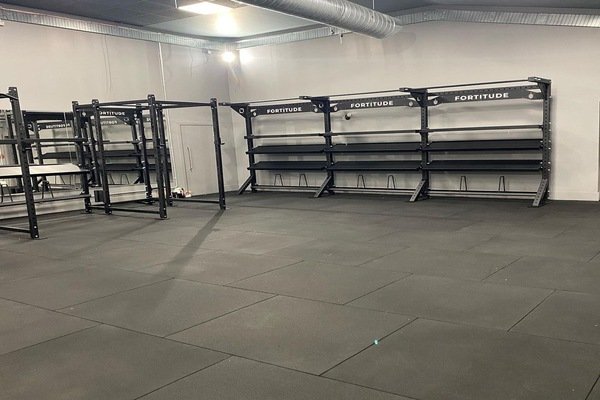
With the right approach for each specific type of stain, you can maintain the appearance and integrity of your rubber gym mats even in the face of challenging spills and accidents.
Are There Any Natural Or Eco-Friendly Cleaners Recommended For Rubber Mats?
Yes, several effective eco-friendly cleaners work well on rubber gym mats. A simple solution of white vinegar and water effectively cleans and disinfects. For deeper cleaning, castile soap diluted with water provides excellent results. Essential oils like tea tree or lavender can be added for antimicrobial benefits and pleasant scent.
As sustainability becomes increasingly important in manufacturing and maintenance practices, I’ve been testing eco-friendly cleaning options extensively in our factory lab. I can confidently share these effective natural alternatives that are both safe for your rubber mats and better for the environment:
Everyday Eco-Friendly Cleaning Solution
This simple recipe works extremely well for regular cleaning:
- 1 gallon warm water
- 1/2 cup white vinegar
- 10 drops tea tree essential oil (natural antimicrobial)
- 5 drops lemon essential oil (cuts grease and freshens)
Plant-Based Soap Option
For situations requiring more cleaning power:
- 1 gallon warm water
- 2 tablespoons unscented castile soap
- 10 drops essential oil of choice (optional)
DIY Stain Remover Paste
For targeted stain removal:
- 1/4 cup baking soda
- 1 tablespoon castile soap
- 5 drops lemon essential oil
- Enough water to form a paste
Natural Rubber Conditioner
To maintain appearance naturally:
- 2 parts olive oil
- 1 part lemon juice
- Apply sparingly with microfiber cloth
- Buff thoroughly to avoid slipperiness
Benefits of Natural Cleaners
Based on our testing, these natural alternatives offer several advantages:
- Seguridad: No harmful fumes or residues that could affect athletes
- Material Compatibility: Gentle on rubber compounds, preventing premature aging
- Environmental Impact: Biodegradable and less harmful to waterways
- Coste: Generally more economical than commercial products
- Multipurpose: Can often be used on other gym surfaces and equipment
One important note: while these natural options are effective, they may require slightly more physical effort (scrubbing) compared to some commercial products that use stronger chemicals. The trade-off is well worth it for the safety and sustainability benefits.
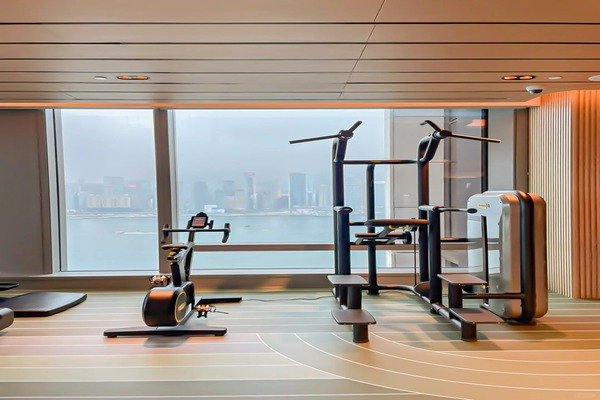
By switching to these natural alternatives, you’ll maintain your rubber gym mats effectively while reducing your environmental footprint and creating a healthier indoor environment for everyone using your facility.
How Often Should Rubber Gym Mats Be Cleaned To Maintain Their Quality?
Rubber gym mats should be swept or vacuumed daily in commercial settings and 2-3 times weekly in home gyms. Deep cleaning with appropriate solutions should occur weekly for commercial facilities and monthly for home gyms. Heavy-use areas require spot cleaning after each training session to prevent stain setting and bacterial growth.
From my experience overseeing manufacturing and quality control, I’ve developed specific cleaning frequency recommendations based on usage scenarios. Following these guidelines will maximize both the appearance and lifespan of your rubber flooring investment:
Commercial Gym Cleaning Schedule
For facilities with high daily traffic:
| Cleaning Task | Frecuencia | Notas |
|---|---|---|
| Sweeping/Vacuuming | Diario | Focus on areas with chalk or powder use |
| Spot Cleaning | As needed (same day) | Clean spills immediately |
| Damp Mopping | Diario | Use neutral pH cleaner |
| Limpieza a fondo | Semanal | Use auto-scrubber or deep clean by sections |
| Disinfecting | 2-3 times weekly | More frequently during illness outbreaks |
| Conditioning | Trimestral | Apply rubber rejuvenator |
Home Gym Cleaning Schedule
For personal use spaces:
| Cleaning Task | Frecuencia | Notas |
|---|---|---|
| Sweeping/Vacuuming | 2-3 times weekly | More if visible debris accumulates |
| Spot Cleaning | As needed (within 24 hours) | Don’t let stains set |
| Damp Mopping | Semanal | Use neutral pH cleaner |
| Limpieza a fondo | Mensualmente | Complete deep clean process |
| Disinfecting | Biweekly | More frequently during illness |
| Conditioning | Twice yearly | Apply rubber rejuvenator |
Specialized Area Considerations
Different workout zones require adjusted frequencies:
Weightlifting/Chalk Areas
- Dry clean after each training session
- Damp mop daily
- Deep clean twice weekly
Cardio/High Traffic Areas
- Spot clean sweat daily
- Disinfect high-touch surfaces daily
- Deep clean weekly
Low-Use Areas
- Standard schedule can be reduced by 50%
Seasonal Adjustments
I always advise our clients to adjust cleaning frequency based on:
- Summer months: Increase frequency due to increased sweating
- Winter months: Focus more on entrance areas to prevent salt/snow damage
- Competition periods: Deep clean before and after events
Consistent preventative maintenance is always more cost-effective than reactive cleaning or premature replacement. A well-maintained rubber floor can last 10+ years, while neglected flooring might need replacement in as little as 2-3 years.

By following these frequency guidelines and adjusting as needed for your specific situation, you’ll maintain optimal performance and appearance of your rubber gym mats while maximizing their useful lifespan.
Can I Use A Steam Cleaner On Rubber Gym Mats?
No, steam cleaners should not be used on rubber gym mats. The high heat can break down adhesives, cause warping, and potentially damage the molecular structure of the rubber. Steam can also seep between seams and beneath mats, creating ideal conditions for mold and mildew growth. Stick to room temperature or slightly warm water cleaning methods.
This is one of the most common questions I receive, and I must strongly caution against using steam cleaners on rubber gym flooring. In our factory testing, we’ve documented numerous issues that steam cleaning causes, even with commercial-grade rubber:
Why Steam Cleaning Damages Rubber Mats
There are several specific mechanisms of damage:
-
Thermal Expansion and Contraction
- Rubber expands when heated and contracts when cooling
- This cycle creates warping and can break adhesive bonds
- Repeated thermal stress accelerates aging of the material
-
Moisture Penetration
- Steam penetrates seams between tiles or rolls
- Moisture becomes trapped beneath mats
- Creates perfect conditions for mold and mildew growth
- Can damage subfloor materials
-
Chemical Structure Changes
- High heat can alter rubber’s molecular structure
- Accelerates oxidation and breakdown of polymers
- May release volatile compounds from the rubber
- Can cause premature hardening or brittleness
-
Adhesive Failure
- Most flooring adhesives soften when heated
- Steam temperatures exceed safe thresholds
- Results in adhesive migration or complete bond failure
- Leads to loose or lifting mats
Safe Alternatives to Steam Cleaning
Instead of steam, I recommend these effective alternatives:
-
Auto-scrubbers with temperature control
- Use cool or slightly warm water (never above 85°F/29°C)
- Use soft brushes or pads
- Ensure proper water recovery
-
Two-bucket mopping system
- One bucket with cleaning solution
- One bucket with clean rinse water
- Change water frequently
-
Disinfectant sprayers
- Use EPA-registered disinfectants safe for rubber
- Allow proper dwell time
- Do not oversaturate
The desire to use steam often comes from concerns about sanitization. Rest assured that proper cleaning with appropriate disinfectants is highly effective without the risks that steam introduces.
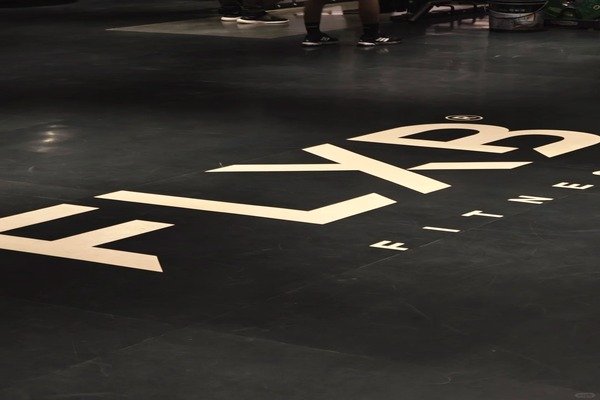
Protecting your investment in rubber gym mats means avoiding shortcuts like steam cleaning that may seem convenient but ultimately cause significant damage and shorten the lifespan of your flooring.
What’s The Best Method To Prevent Rubber Gym Mats From Getting Too Grippy?
To prevent rubber gym mats from becoming excessively grippy, establish a regular cleaning routine to remove dust build-up and residues. Apply a diluted solution of mild soap and water, then rinse thoroughly. For optimal grip balance, consider using a specialty rubber conditioner designed for gym flooring that’s specifically formulated to maintain appropriate traction levels.
Finding the perfect balance of grip is actually one of the most technical aspects of rubber flooring maintenance. Too little grip creates safety hazards, while too much grip can impede movement and even cause injuries. Based on our extensive product testing, here’s my comprehensive approach:
Understanding Grip Factors
First, it’s important to understand what causes changes in rubber mat grip:
- Surface residue buildup – Chalk, sweat salts, and cleaning product residue can create a tacky surface
- Microscopic texturing – Regular use creates micro-abrasions that increase friction
- Humidity levels – Higher humidity often increases rubber tackiness
- Temperature – Warmer rubber tends to be more grippy than cooler rubber
- Rubber compound aging – Natural oxidation can change surface characteristics
Preventative Maintenance Program
To maintain optimal grip levels, I recommend this systematic approach:
Daily Practices:
- Dry mop or vacuum to remove abrasive particles
- Wipe up chalk dust immediately after use
- Use entrance mats to reduce outside contaminants
- Maintain consistent humidity levels (40-60% ideal)
Weekly Maintenance:
- Clean with properly diluted neutral cleaner (over-concentration leads to residue)
- Rinse thoroughly – residual soap is a major cause of excessive grip
- Ensure complete drying before use
Monthly Treatment:
- Apply appropriate rubber conditioner with pH 7.0-7.5
- Use products with:
- Non-silicone humectants
- UV stabilizers
- Anti-static properties
- Apply in thin, even coats
- Buff thoroughly after application
Correcting Excessive Grip
If your mats have already become too grippy, this restoration process works well:
- Deep clean with a slightly acidic solution (white vinegar diluted 1:20 with water)
- Rinse extremely thoroughly
- Allow to dry completely
- Apply specialized rubber conditioner designed for athletic flooring
- Buff with microfiber pad until no residue remains
Products to Avoid
These common products actually make grip problems worse:
- Silicone-based protectants (create unpredictable grip patterns)
- Oil-based conditioners (dangerous slipperiness)
- Ammonia cleaners (damage rubber while increasing tackiness)
- Alcohol-based products (dry rubber excessively)

By implementing these systematic maintenance practices, you’ll achieve the ideal grip level for your specific athletic activities – secure enough for stability but not so tacky that it restricts proper movement patterns.
Conclusión
Proper rubber gym mat cleaning is straightforward but requires consistent attention and the right products. Regular sweeping, appropriate cleaning solutions, and avoiding damaging practices like steam cleaning will extend your mats’ life significantly while maintaining safety and appearance.
